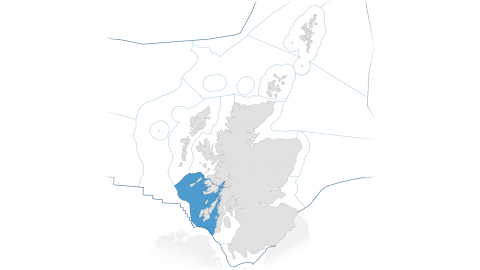The tables in this section reflect the output of the workshop (October 2019) when the pressures from human activities were assessed for the period 2014 to 2018 for the region. The summary text below the tables elaborates on some of the points that were made at the workshop.
This pressure assessment uses the FeAST classification which includes two abrasion pressures: surface abrasion & sub-surface abrasion. Some expert groups combined these as a single pressure "surface & sub-surface abrasion" whilst others focussed on using surface abrasion alone, hence there is a slight difference in handling for some regions.
The ranking of the pressures in terms of impact is a relative exercise within each region, and is not a statement of their absolute impact. Detailed comparison between regions on the basis of these relative pressure assessments is therefore not advisable.

Main pressures identified
| Priority [1] | Pressure (FeAST classification) [2] | Main healthy and biologically diverse components affected [3] | Main contributing FeAST activity /activities to pressure [4] | Associated productive assessments [5] |
|---|---|---|---|---|
| 1 | Removal of target species (including lethal) |
|
||
| 2 | Removal of non-target species (including lethal) |
|
||
| 3 | Surface abrasion |
|
||
| 4 | Synthetic compound contamination (inc. pesticides, antifoulants, pharmaceuticals). Includes those priority substances listed in Annex II of Directive 2008/105/EC. |
|
||
| 5 | Underwater noise |
|
Other pressures identified
Footnote: the ordering of entries is alphabetical and there is no prioritisation between the pressures.
Summary from workshop
Argyll is a diverse region, though without direct input from large industrial conurbations, ranging from ocean-influenced shelf seas to brackish sea lochs. Collision risk in Argyll is not listed in the top five pressure, but there is lots of uncertainty in terms of how often this occurs: mainly driven by extensive yachting activity in this region and commercial shipping routing through the Irish sea to the Minch. Basking sharks are regularly observed in this area. Numerous seal haul out sites exist; small cetaceans (porpoises/dolphins) are regularly observed. The region is also important for minke whales.
In identifying the top five pressures for the whole Argyll region the following activities were considered to be important.
1 Removal of target species (lethal): all species involved in recreational angling have been assumed to be ‘target’ species rather than ‘non-target’ bycatch. This activity is likely to be (mainly, though not exclusively) concentrated in inshore waters. Scallop dredging; bottom otter trawling and pair trawls; creeling and potting; dive fisheries; line fishing (hand and mechanised longlining); recreational fishing; scallop dredging.
2 Removal of non-target species: mainly linked to impacts of bottom otter trawling and pair trawls; recreational fishing; scallop dredging; intertidal fishing e.g. bait digging; creeling and potting.
3 Surface abrasion: bottom otter trawling and pair trawls; creeling and potting; scallop dredging.
4 Synthetic compound contamination: this presumes that wastes associated with tourism end up in coastal waters. It has been assumed here that the bulk of such wastes originate from yachts, which could conceivably result in local contamination in marinas and other places where many vessels lay at anchor. Shipping and finfish culture also contribute.
5 Underwater noise: driven by military (including sonar) and large commercial vessel activity. Small boat noise footprint expected to be relatively local (small engines create higher-frequency sounds which get attenuated quicker) but more widespread wherever significant numbers of large vessel movements occur. Impacts on other marine receptors (fish, invertebrates) largely unknown due to lack of scientific data. Sea surface military activity was considered here, since underwater noise, visual disturbance and collision risk by naval vessels seemed an important pressure in addition to sonar use. Finfish culture also contribute to underwater noise.

